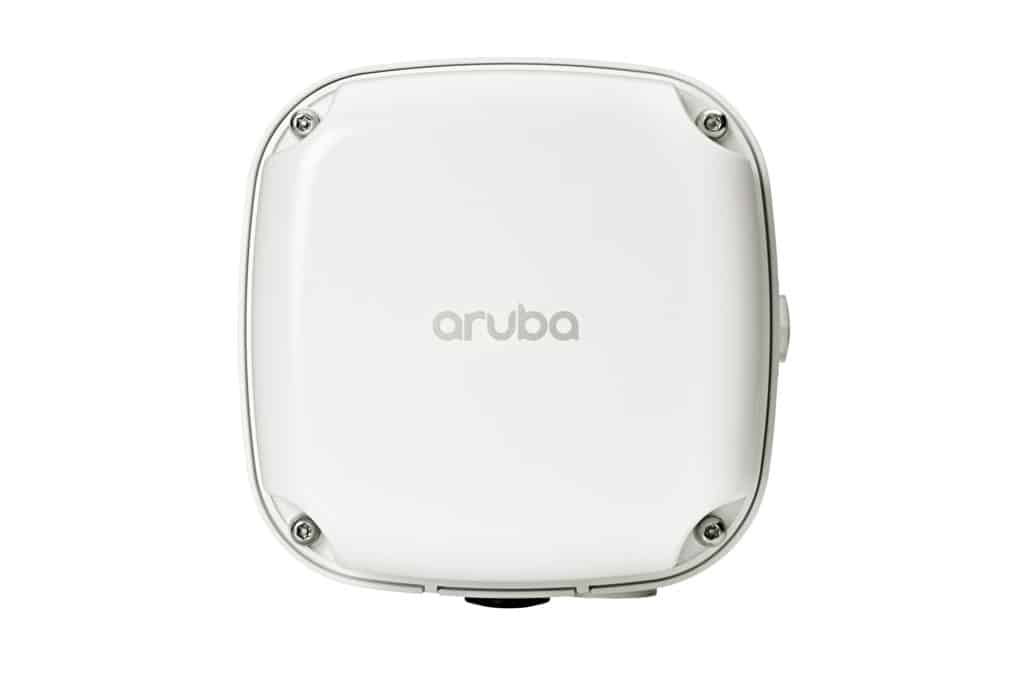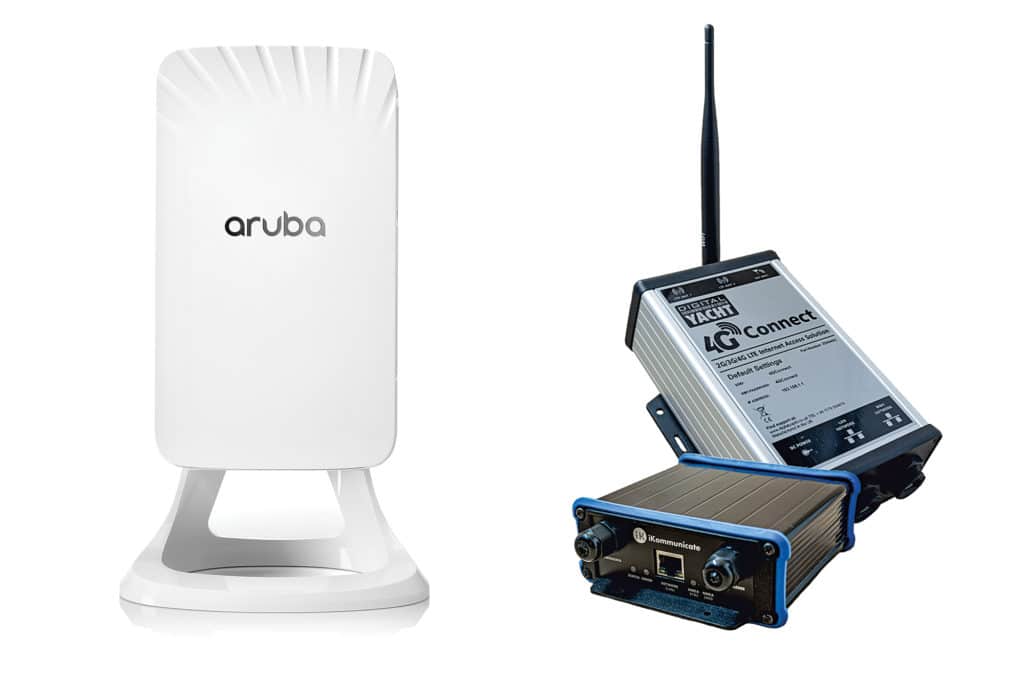
Years ago, the most common questions guests asked upon stepping aboard a yacht were about where to stash a sea bag, finding their stateroom, and the day’s itinerary and forecast. In 2021, two other questions loom larger: the yacht’s Wi-Fi network name and its password. For most landlubbers, the source of connectivity is irrelevant, so long as the speeds are fast, there’s a good signal throughout the vessel, and their data is secure.
One not-so-humble piece of equipment helps to ensure that those things are all true.
A wireless router is the device that distributes a secure signal to onboard computers, multifunction displays and networked devices. The router also creates the wireless local area network on the yacht. These routers—known as access points, or APs in industry parlance—are typically black boxes with software that replaces most hard-button interface controls. After equipping a yacht with the right antennas and airtime plans, choosing the best routers can make the most difference in terms of signal strength and access on board.
Unlike most marine-specific equipment, routers typically work equally well ashore and aboard. One difference, however, is that while terrestrial-based routers typically deal with a single signal (such as Comcast internet), onboard routers often deal with three: satellite, cellular and long-range Wi-Fi signals.
“Aruba routers are signal-agnostic and can support multiple internet uplink connections,” says Dave Chen, senior product marketing manager for Aruba, which is a Hewlett Packard Enterprise company. “They’re customizable, so if you’re at sea, you can have cellular, satellite or Wi-Fi bridging used as the internet uplink while coming into port, and you can have a single router connect to them, depending on which signal is available.”
Chen says some routers can combine cellular, satellite and Wi-Fi signals, as well as simultaneously use multiple internet connections to bolster data-transfer speeds and bandwidth.
Determining how far internet signals can travel from a router and how many APs are required to deliver a signal evenly across a yacht can get complicated. Success often depends on the distances and the boatbuilding materials involved.
“RedBox internal Wi-Fi typically works extremely well on any yacht up to approximately 60 feet LOA,” says Sue Wildgoose, director at MailASail, which manufactures RedBox routers. Yachts with numerous closed-off belowdecks compartments typically create higher hurdles than yachts with open interior spaces, she adds.
Chen agrees. “In carpeted spaces in open areas, one AP can cover 1,500 to 2,500 square feet fairly reliably,” he says. “When spaces get smaller and have more walls and obstructions, the math gets more complex.”

Smaller yachts with more fiberglass, Chen says, typically allow for more favorable coverage through walls and surfaces, while larger vessels with more steel bulkheads and firewalls will block more Wi-Fi signals.
Wi-Fi planning tools let owners and installers determine the optimal place to install a router (or several routers), Chen says.
“The best approach might be as simple as a single router near the helm, like an Aruba AP-505H with a USB dongle for cellular uplink, or it could be an SD-WAN gateway or controller with built-in LTE and multiple APs professionally installed inside the yacht to cover more interior and exterior areas, including the engine room and staterooms in the bow,” Chen says. “The only real limit is the imagination of the owner and how much room there is on board.”
While one AP can likely service a 60- to 80-foot yacht, larger yachts typically require multiple routers. Often, these routers can be set up as a mesh network to distribute signal evenly throughout a yacht. Also, much like at-home WLANs, installing simple networks aboard smaller boats can usually be a DIY project. Professional installers are often required for more-complex jobs, according to Chen and Rick Driscoll, KVH’s vice president for service development and implementation.
Once installed, WLANs provide benefits beyond signal distribution. For example, Wildgoose says, “RedBox uses our own teleport firewall to restrict web access and lock down any onboard devices like smartphones, tablets and laptops to optimize data speeds and traffic.” This capability, she says, is particularly important when using satellite communications because background data use can get expensive. “Data is passed through this firewall, allowing us to block or allow traffic on a per-application basis. Customers can also use their preferred virtual-private-network software.”
Good routers also provide network security and prevent hackers from accessing data that moves across a network.
“Aruba’s products all support the latest wireless security features, such as WPA3 and Enhanced Open encryption, in addition to the use of secure 802.1X authentication where required,” Chen says. “All Aruba products support web-content filtering, and wireless intrusion detection and prevention, which allows the routers to look for rogue APs and wireless-based attacks to alert the network that a security incident has occurred.”
Because WLANs deliver a signal to all networked devices, they’re also a great way of sharing data to devices from the yacht’s NMEA 0183 or NMEA 2000 network. While this ability can sometimes require a third-party NMEA gateway, “this is cool and fun stuff that we like to support, as everyone has their favorite navigation app,” Wildgoose says.
So, if you’re equipping a yacht with communication equipment, or if you already own a bevy of antennas but are concerned about cybersecurity or are experiencing less-than-ideal signal distribution, add a new router (or two) to your list. The costs are negligible compared to the price of antennas and airtime, and the benefits are as strong as the signals these routers deliver.
Better still, modern routers are typically capable of supporting multiple WLANs, meaning you can have a private owner’s network and a shared guest network. Remembering the passwords, however, is still up to you.









